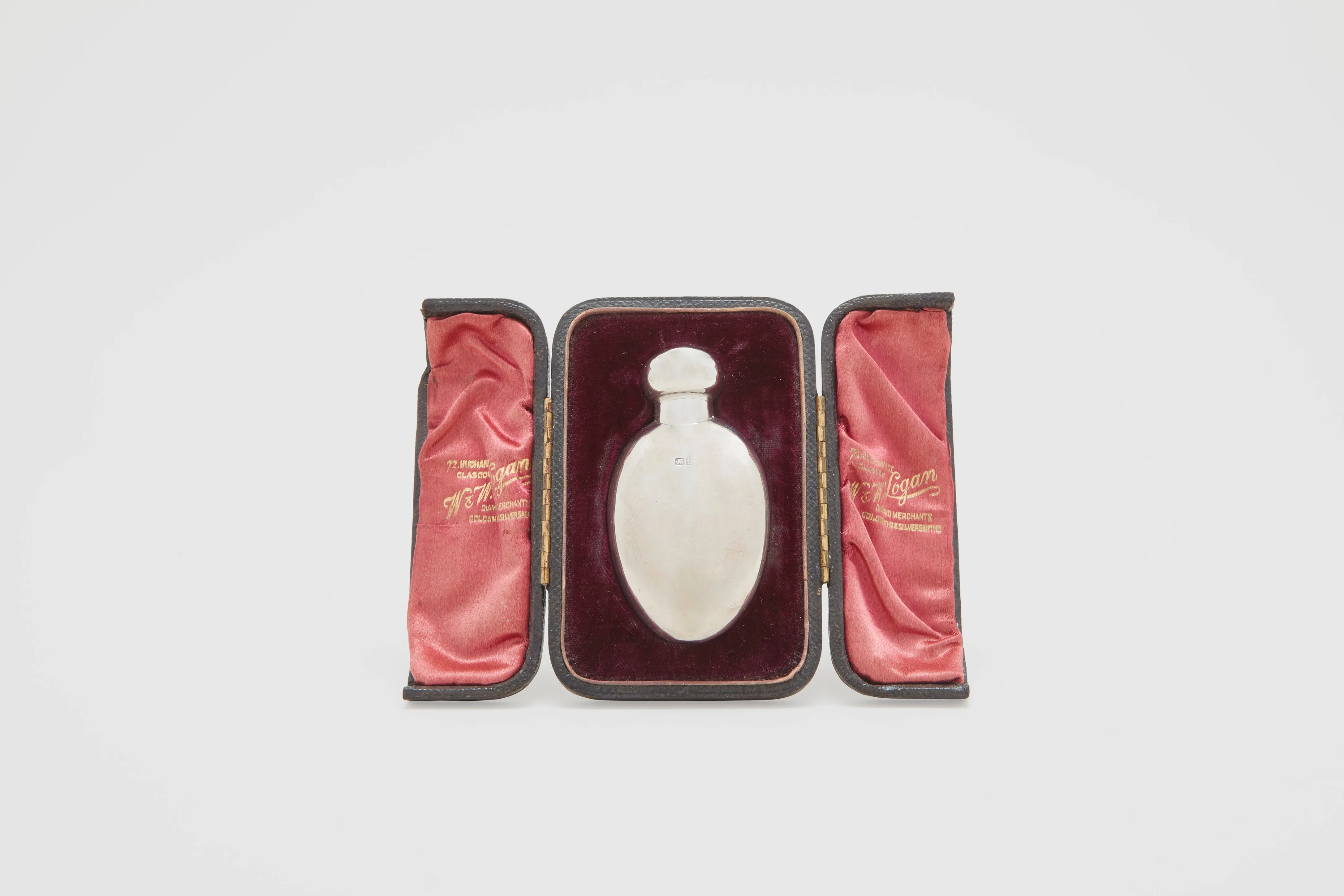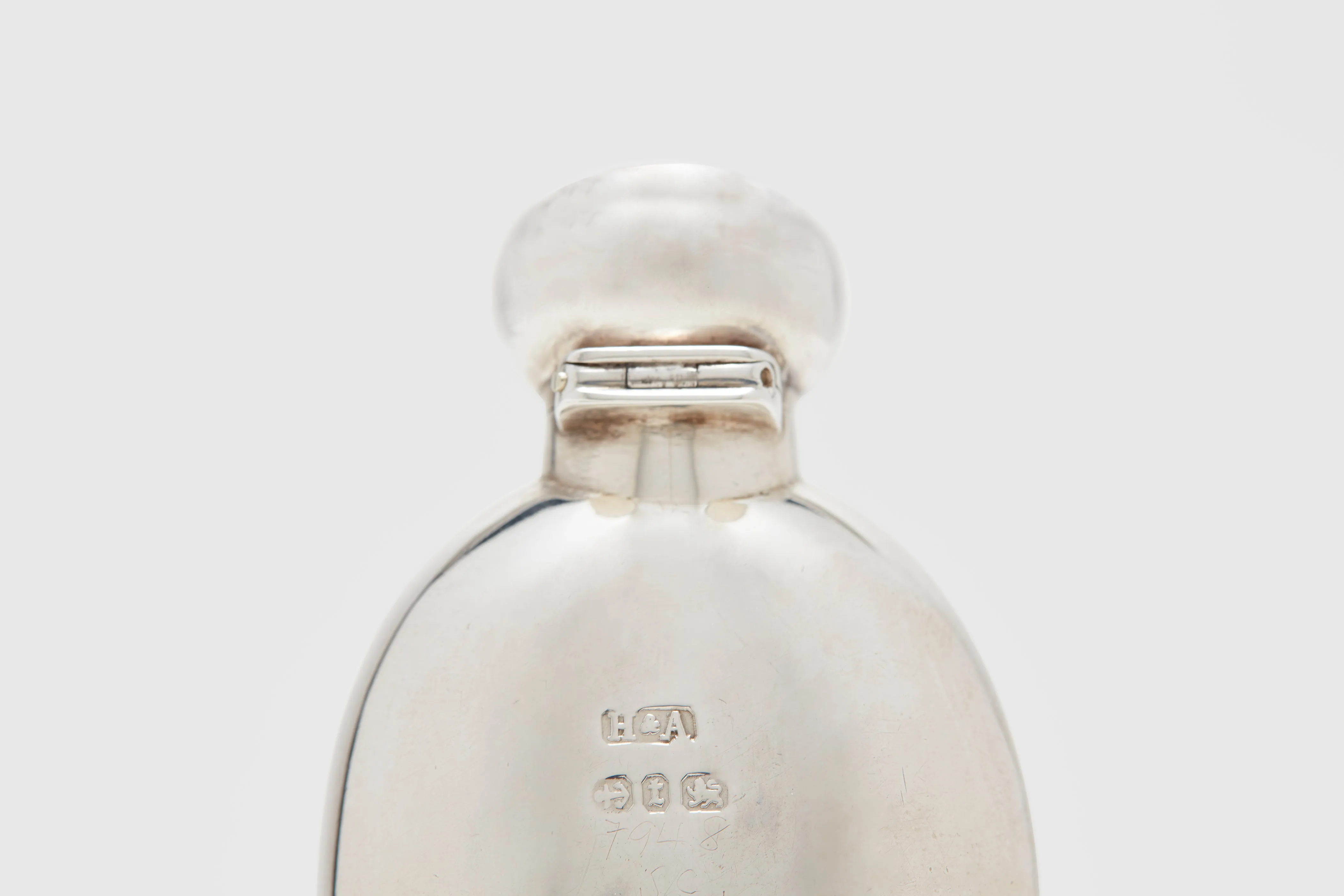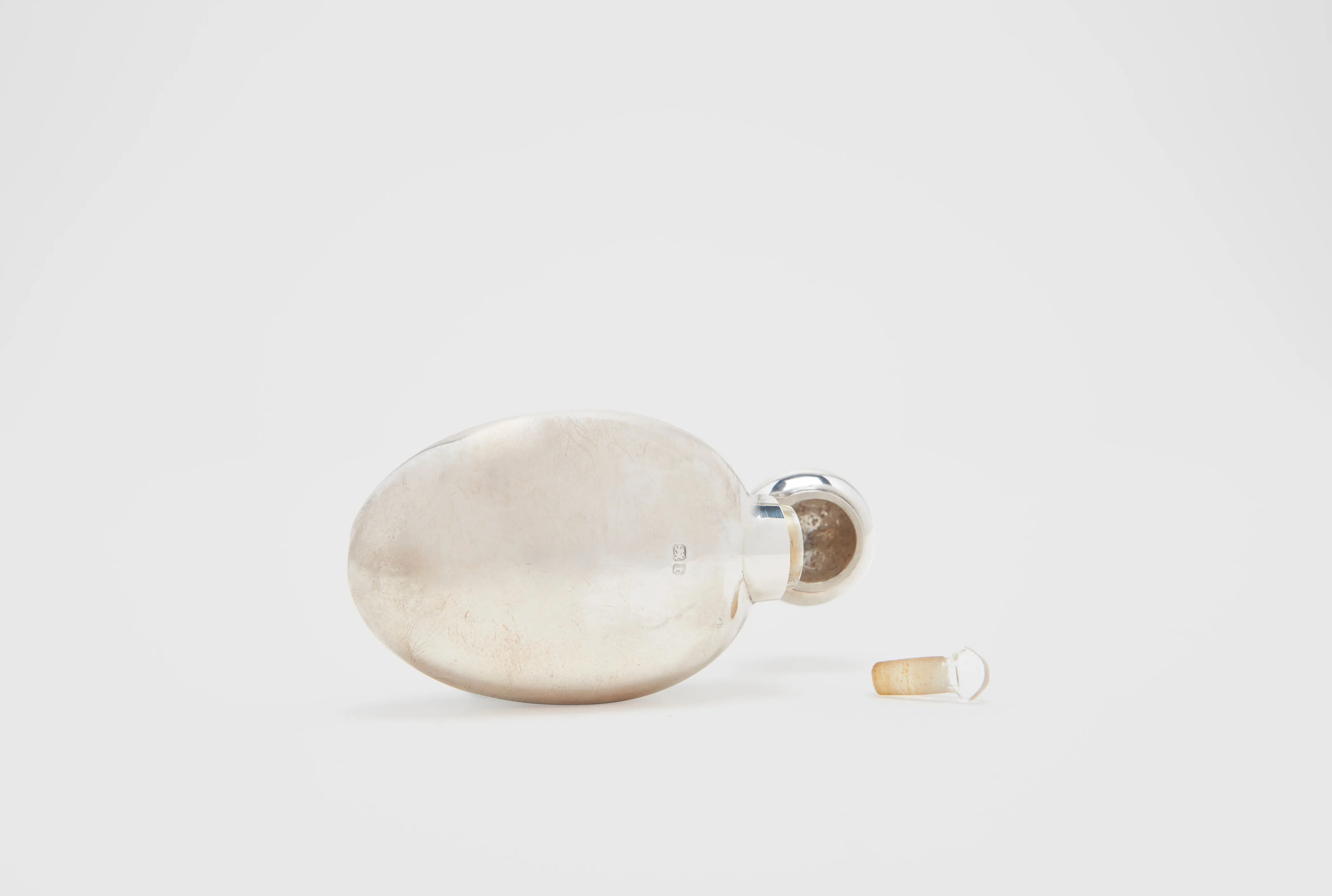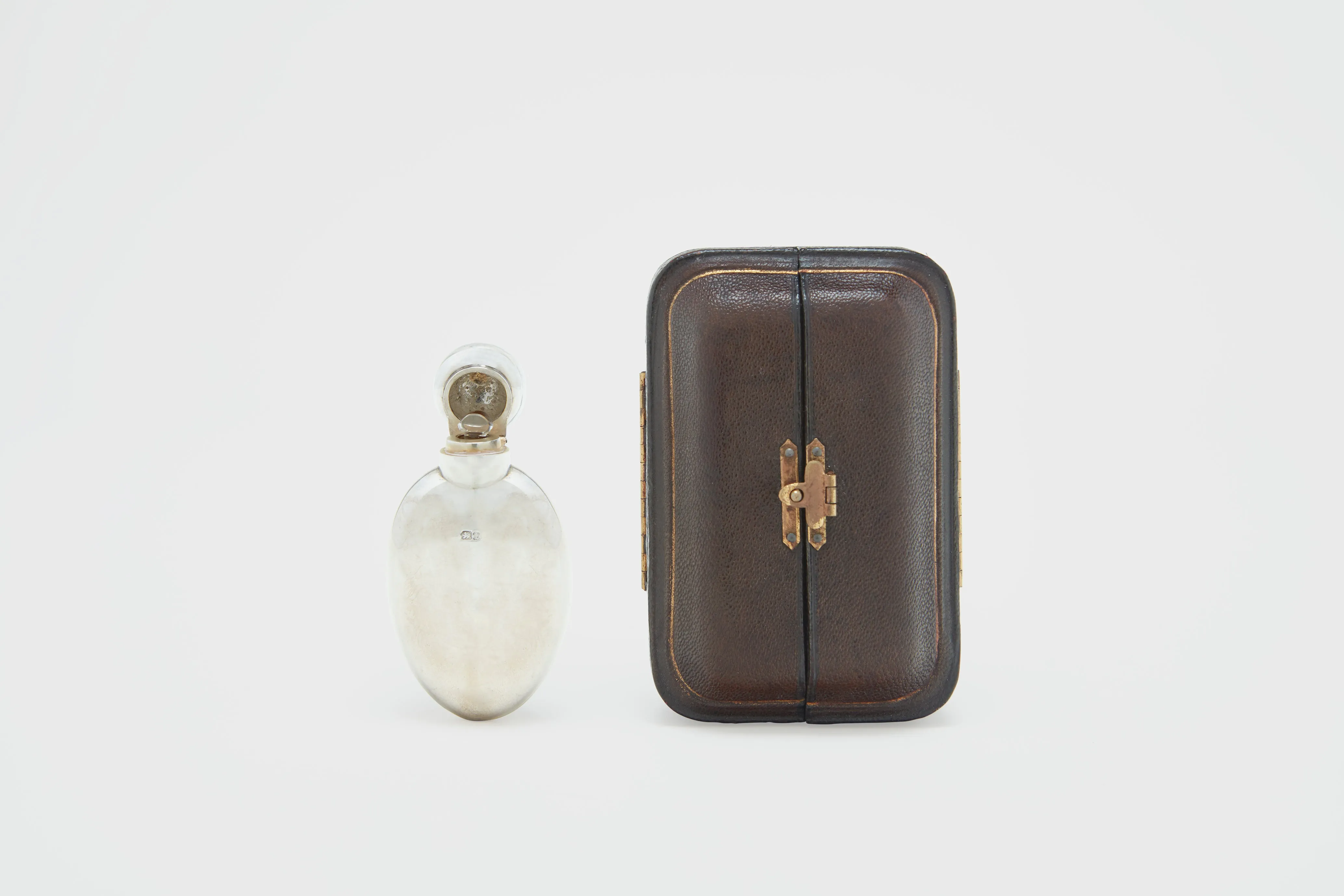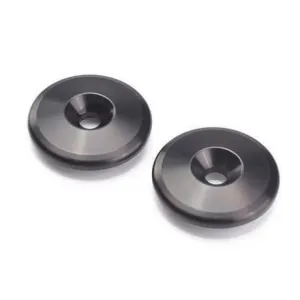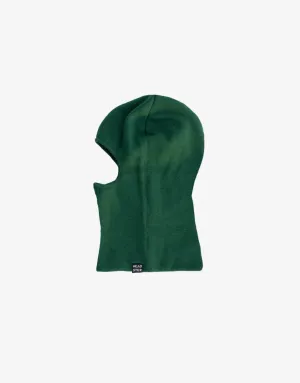A sterling silver and gilt lined pocket or purse scent bottle, in the original fitted box. This is a stunning little pocket scent bottle that can be for a man or a woman. The shape is very ergonomic in the palm, the quality and make of the piece is superb, even complete with its original hand made glass stopper that keeps an air tight seal on the bottle.
The scent bottle is perfect for decanting from a large perfume or cologne bottle in order to keep in a bag, on your person, or indeed to travel with. It is complete with the beautiful, original retailer's leather wrapped, wooden framed, velvet and silk lined box. The original retailer of this piece was a diamond merchant and goldsmith in Glasgow, Scotland, by the name of W & W Logan who operated out of a store front on 72 Buchanan Street.
Buchanan Street was named after Andrew Buchanan, a Tobacco Lord, who envisioned that Glasgow would spread westward. With this in mind, on the 15th of February, 1763, he acquired the first portion of “five acres or thereby of ground in the Burgh of Glasgow, in the part called Palezeon’s Croft, on the North side of Argyle Street, with plots or steadings for building on each side thereof “. His plan was to take down his own mansion which was situated on Argyle Street opposite the entrance to St. Enoch Square and thereby enable access to the new street. Unfortunately, the American War of Independence ( 1775-1783 ) intervened and Andrew Buchanan lost his tobacco fortune. His business was wound up and his development plan ended up in the hands of some Glasgow bankers. Yet, in spite of this setback, his vision soon became reality and lots on the street bearing his name were progressively occupied. The first part of Buchanan Street from Argyle Street to Gordon Street was opened in 1780 and the remaining section in 1804. Initially, the street was occupied by a mixture of merchants’ villas, small holdings and some workshops but as the century progressed some very handsome buildings were erected, the first of significance being St George’s Church, now known as St. George’s-Tron Church, designed by William Stark and completed in 1808. Further fine buildings were added, including the Glasgow Stock Exchange in 1875-77, designed by John Burnet. The street acquired a reputation for elegance and specialty shopping which continues to this day.
The flask was made in Birmingham, England, in 1893 by silversmiths Holton & Allday, a fine silversmith that operated in the same workshop on Warstone Lane from 1888 to 1933. The flask is in superb condition and is all original, having never been overly polished, and will serve as a usable scent bottle today, if required.

